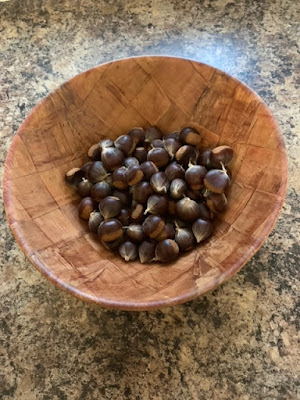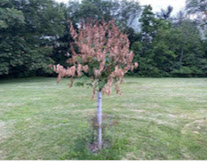The monarch butterfly, as most people know, is in trouble, due in part to a radical decimation of milkweed on more than one hundred million acres of farmland in the U.S. in recent years. Thus far this summer, I had seen a grand total of two monarchs, one having visited the raingarden in my front yard on Harrison Street. Another raingarden on Harrison Street, at the Spruce Circle senior housing, had just been bulldozed while in full flower.
With that traumatic step backwards in mind, I set out yesterday on my bike to check out a few spots elsewhere in Princeton. If a monarch were to travel around town at about the speed of a bike, wings warmed by the sun after a recent rain, would it find any prospective mates?
First stop was the meadow at the corner of Mountain Ave and the Great Road. The Joe-Pye-Weed was blooming as it does every year, but no monarchs to be seen.
Then a ride up the Great Road to Farmview Fields, where I had hooked the town up with Partners for Fish and Wildlife--a federal agency--to plant a meadow of warm-season native grasses in a stormwater detention basin that had previously been mowed as turf. More habitat, less mowing. Everyone was happy. I had added some native wildflowers, and others had seeded in. When I checked last year it was doing great. Yesterday, however, I was surprised to find the grasses stunted and the wildflowers gone. It hadn't been bulldozed, but something's wrong with the mowing regime, which should be just once a year during the dormant season.
Again, there's a sign that should signal that this is a special area, requiring a different management.
The heavy equipment had left some patches of ground scarred and bare. Mowing crews are so used to mowing these detention basins elsewhere that they may have started regularly mowing this one, out of habit. I had a job mowing a golf course one summer. It's not the kind of work that encourages thinking outside the box.
An unmowed area nearby showed what the basin should have looked like, with the "turkey feet" of big bluestem rising to the sky.
There was a swallowtail butterfly sampling the basin's meagre offerings, but still no monarchs.
Back down the Great Road to the opening in the fence, near Pretty Brook Rd, to take the boardwalk across the bottom of Coventry Farm over to Mountain Lakes. Lots of common milkweed in the field, but no signs of their being munched on by monarch caterpillars.
Finally, along the boardwalk near a big wet meadow of ironweed (the hydrologic conditions a raingarden imitates), I saw a lone monarch, flying about but not landing. As the monarch numbers have dwindled since the 1990's, the question arises, how do they find each other? They start each year in a small enclave in the mountains of Mexico, then spread out across vast areas of the U.S. and Canada. This migration, with one generation succeeding another as they move northward, is predicated on having sufficient numbers for individuals to find each other and mate. The lone monarch and the uneaten milkweeds offered little reason for optimism.
At Mountain Lakes House, a popular place for weddings and other gatherings, and also home base for Friends of Princeton Open Space, the raingarden I designed was prospering.
Lots of color there,
and in another rain garden in the driveway, but no monarchs to be seen.
There was still one spot to look, though, in the fields of Tusculum, preserved by Friends of Princeton Open Space and others, and packed with milkweed. To get there meant maneuvering through the now tattered evergreen forest of Community Park North. High winds in recent years have knocked down most of the pines and spruce, which really aren't natural to this area but had provided a deep forest feel that was enjoyable to walk through. Now, fallen trees have opened up the canopy, energizing an understory of invasive stiltgrass and honeysuckle.
Some trails are lined by young ash trees that will likely be attacked by the emerald ash borer when it reaches Princeton. This strangest of woods was not feeding optimism either.
The fields of Tusculum also looked different than in past years, perhaps again due to a mowing regime that might not be the best for wildlife habitat.
Mountain mint, once a common wildflower there, was nowhere to be seen. And no monarchs.
But then, near Cherry Hill Road, next to a purple patch of tick trefoil and Indian grass,
monarchs, a pair, mating!
They flew over into the meadow to continue. Part naturalist, part voyeur, I lingered, wishing to document how long such pivotal acts take. It became clear that this was no brief rendezvous, so I moved on,
to the next field over, where common milkweed sprawled over more than an acre. And there, another monarch, showing off its brilliant, speedy flight, ducking in and out among the milkweeds, as if in a hurry yet undecided as to where to land. It did land a few times, briefly, perhaps to lay an egg? I checked the undersides of leaves, but it was hard to tell from a distance where it had landed.
I biked home more hopeful than two hours prior. Those monarchs were starting the last generation of the year, the one that will fly all the way back to Mexico. On the way back, I passed the Princeton High School's detention basin just north of the performing arts center on Walnut Street. Now wouldn't that be a fine gesture, an act of generosity and belief in the future, if the school were to turn that empty, unused basin into a monarch meadow.


















